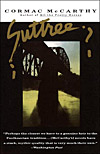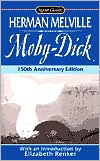David Wroblewski's Favorite Books

Here are five books I love, chosen from my shelf of lifelong keepers—four novels and one children's book. All have influenced, sometimes subtly, sometimes not-so-subtly, the writing of The Story of Edgar Sawtelle.
Suttree By Cormac McCarthy
Though some of Cormac McCarthy's other novels have gotten more attention lately, I have a special fondness for the meandering road followed by Cornelius Suttree, a man awakening from a self-imposed exile in the terrible-mystical underworld of 1950's Knoxville, Tennessee. Part of what makes this book so captivating is Suttree's own fascination with the characters he encounters, including a figure referred to as "the Country Mouse," an Appalachian dervish of a man whose appetite for mischief defies polite description. Alternately bawdy and tender, raucous and poetic, shot through with spectacular prose riffs and forehead-smackingly great dialogue, there is nothing else like it in the McCarthy canon. Which, as Cormac McCarthy aficionados know, is saying something.

By William Maxwell
There's a special society of readers who know what a perfect novel So Long, See You Tomorrow is, and I'm proud to be among them. The story opens with a murder, suicide, and mutilation near the small Illinois town of Lincoln, but quickly turns to the emotional journey of Maxwell himself, who, in 1918, at the age of ten, lost his mother to the Great Influenza. The result is a braid of memoir, fact, and fiction rendered in gorgeously spare prose. There's not a page I haven't lingered over, but I have a special attachment to Trixie, a dog who is briefly given her own point of view in the second half of the book. Trixie occasioned a now-famous debate between Maxwell and his editor, who thought it was going too far to allow a dog's dreams. Maxwell stood his ground, and as a result brought to life the character I consider Almondine's literary mother.

By Herman Melville
Yes, yes, it's very long. But not that long. And besides, Moby Dick is a blast to read: funny (both ha-ha and strange), adventurous, profound, absurd, bordering one moment on Shakespearean tragedy, the next on musical theater—and along the way, tossing off more than a few of those metafictional head-fakes we so admire in novels nowadays. It's a got a few rough edges—Moby Dick has always impressed me as not so much written as chopped from the Great Tree of Narrative with a rusty axe—but you don't know what a novel can be until you've read this thing. I've opened it at random and sampled the prose countless times just to remind myself that the crazier the idea for a story, the more wholehearted you have to be about writing it. When you've seen the last of the Pequod, I recommend following up with Andrew Delbanco's wonderful biography, Melville: His World and Work, to get a sense of how this impossible book came to be.

By F. Scott Fitzgerald
Imagine it: 1922, and young Scott Fitzgerald, fresh off a run of short stories, is writing a letter to his editor, Maxwell Perkins, about a book he has in mind, "something new—something extraordinary and beautiful and simple + intricately patterned." I came across that statement at a time when I had a pile of story-parts on my hands, a few chapters and lots of notes about a boy and a dog and a farm, but I was struggling to see how they might someday coalesce into a novel. Fitzgerald's declaration of intent, and especially the idea of "pattern", set me on a quest to understand what kind of storytelling glue holds novels together. What is it that makes readers experience a 300 page story as a single narrative instead of many fragments? I'd never been especially crazy about Gatsby, thinking it was about a gang of spoiled rich people, but I went after it anyway with a scalpel and a magnifying glass, trying to locate the "intricate pattern" Fitzgerald had been talking about. In the process I gained an entirely new respect for this book. Beyond its tour de force prose, beyond the flashy parties and the lost-love plotline that occupies the foreground, Gatsby is a story about a flight from, and a return to, the Midwest—and about a man discovering his conscience.

By Chris Van Allsburg
If I could invent literary awards, there would be an accordion-shaped medallion handed out for tomes that somehow blossom into many different books upon reading. Italo Calvino's delightful If on a winter's night a traveler is one great example (it begins, "You are about to begin reading Italo Calvino's new novel, If on a winter's night a traveler. Relax. Concentrate.") but Chris Van Allsburg's illustrated marvel happens to be my favorite. The conceit is simple and brilliant: a man named Harris Burdick leaves a publisher just one masterful drawing, along with its caption, from each of fourteen proposed picture books. But Burdick never returns, so the rest of his stories must come from our imagination. Half story, half puzzle, Harris Burdick is an object lesson in the suggestive power of a single fictive moment, as enjoyable for kids as it is for grownups. 





